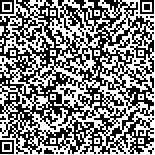下载中心
优秀审稿专家
优秀论文
相关链接
摘要

根据干涉图信号和噪声时频分布差异的特点,提出一种改进的基于经验模态分解EEMD的InSAR干涉相位滤波方法。该方法首先利用可有效降低模态混叠的EEMD算法,对干涉图的实部及虚部分别进行2维经验模态分解,获得具有不同时间尺度的模态分量;然后根据信号和噪声分量的时间尺度分布特性的差异,采用适用于非线性信号分析的KECA算法对噪声识别、分离;最后利用去除噪声后的模态分量重构干涉图。为了证明本文方法的有效性,分别利用模拟数据及真实InSAR差分干涉相位进行滤波试验。对比本文EEMD-KECA滤波方法、Goldstein滤波、圆周期—中值滤波、EMD分解、EMD-PCA方法的滤波效果,采用相干斑指数、均方差指数、边缘保持指数进行定量评价。结果表明,与经典InSAR干涉图滤波方法相比,本文联合EEMD-KECA算法的滤波方法能有效滤除干涉图噪声,且在条纹边缘等细节信息的保持上也具有较大优势。
Interferogram filtering is an important procedure in multi-temporal INSAR analysis and application in monitoring regional surface deformation. Researchers have introduced a series of filtering methods, such as Empirical Mode Decomposition (EMD) filter, based on time-frequency analysis to determine the characteristics of the interferometric phase for non-stationary signals. Given the differences in time-frequency distribution between signal and noise of interferogram, InSAR interference phase filtering method based on EMD is proposed and effectively applied in InSAR interferogram filtering with improved capability of phase noise filtering and detail preserving in edge area.
However, in existing EMD filtering methods, some high-frequency modal components are eliminated as noise directly without objective assessment. The mode-mixing problem of EMD also influences the filtering effect.
To address the problems of interferometry phase filtering in EMD, a newly improved InSAR interference phase filtering method based on EMD and noise-screening assessment is proposed.
In the new algorithm, ensemble EMD (EEMD) is applied to obtain modal components of different time scales to the two-dimensional real and imaginary parts of the interferogram by fully utilizing the capability of EEMD in effectively reducing modal aliasing. Then, Kernel Entropy Component Analysis (KECA) algorithm is used for nonlinear analysis of signal noise identification and separation. Finally, interferogram is reconstructed with modal components after noise elimination. After the decomposition and reconstruction of mixed signals, the noise in the interferogram is effectively filtered out.
The performance of the proposed filtering method is tested on simulated data and real SAR images by comparing the filtering effects of Goldstein filter, periodic-median filter, EMD, and EMD-PCA filter with the proposed EEMD-KECA filter. Speckle, variance, and edge-keeping indexes are used for quantitative evaluation. Unlike the classical InSAR interferogram filtering, the proposed method combined with EEMD-KECA filtering algorithm can effectively filter out the interference noise figure and has an advantage in maintaining the fringe edge details.
In the proposed method, EEMD is used to decompose interferogram signal instead of EMD, and KECA is applied to evaluate the phase noise quantitatively. The proposed method can achieve good filtering results while preserving the advantages of strong edge detail maintenance and can avoid the incomplete and partly filtering of image information caused by modal aliasing.
Experimental results show that the proposed method not only can obtain excellent filtering performance in the slowly changing region of fringe but also has excellent filtering effect and high phase fidelity in the dense fringe area and phase edge details. The proposed filtering method is suitable for interference fringes of different densities.

